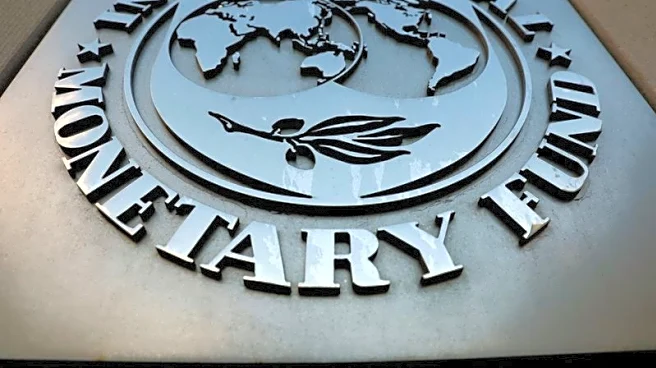What's Happening?
Mexico has become the largest buyer of U.S. goods, surpassing Canada, which held the position for decades. This shift is attributed to evolving trade dynamics and negotiations between President Trump and Mexico's
President Claudia Sheinbaum. From January to August, the U.S. exported $226.4 billion worth of goods to Mexico, slightly more than the $225.6 billion exported to Canada. The trend reflects a growing economic interdependence between the U.S. and Mexico, facilitated by free-trade agreements since 1994. These agreements have strengthened supply chains and economic ties among North America's major economies. Despite the Trump administration's tariffs on Canadian exports, Mexico has benefited from exemptions negotiated by its leadership.
Why It's Important?
The change in trade dynamics highlights Mexico's increasing role in the U.S. economy, potentially influencing future trade policies and economic strategies. As Mexico becomes a more significant trade partner, industries in both countries may experience shifts in supply chain management and production strategies. This development could lead to increased investment and collaboration between U.S. and Mexican businesses, fostering economic growth. Additionally, the shift may impact diplomatic relations, as Mexico's economic leverage grows. The situation underscores the importance of maintaining stable trade agreements to ensure continued economic benefits for both nations.
What's Next?
The trend is expected to continue as long as there are no major economic disruptions or changes to the current trade agreements between the U.S., Mexico, and Canada. Stakeholders in both countries may seek to capitalize on this shift by exploring new business opportunities and strengthening existing partnerships. Political leaders and trade negotiators will likely focus on maintaining favorable conditions to support this growing trade relationship. Monitoring economic indicators and potential policy changes will be crucial for businesses and policymakers to adapt to the evolving trade landscape.
Beyond the Headlines
The shift in trade dynamics may have broader implications for regional economic integration and geopolitical relations. As Mexico's economic influence grows, it could play a more prominent role in shaping North American trade policies and negotiations. This development may also affect labor markets, as industries adjust to new trade patterns and seek competitive advantages. Additionally, the increased interdependence between the U.S. and Mexico could lead to cultural exchanges and collaborations, further strengthening ties between the two nations.













